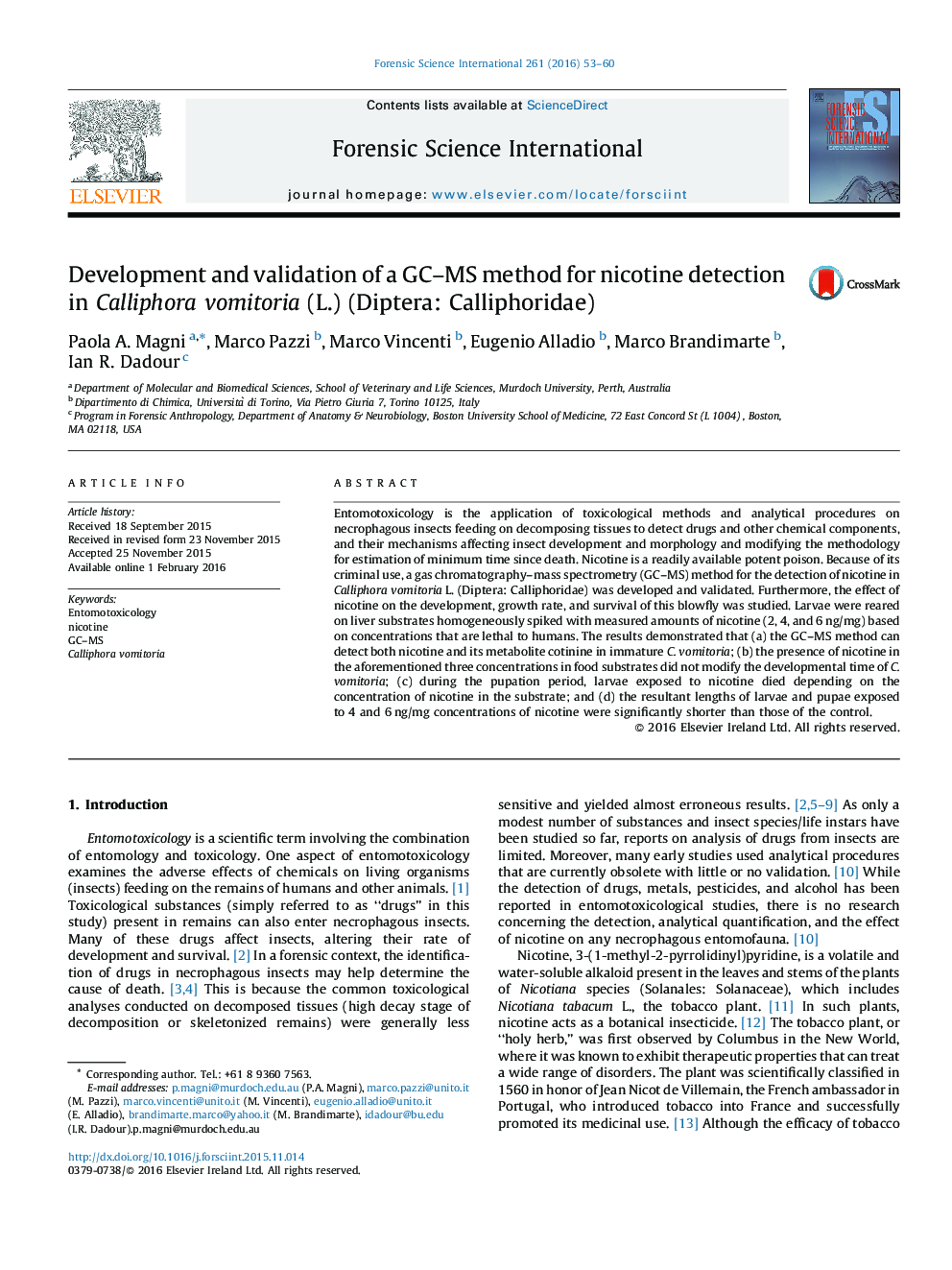| Article ID | Journal | Published Year | Pages | File Type |
|---|---|---|---|---|
| 95170 | Forensic Science International | 2016 | 8 Pages |
•Gas chromatography–mass spectrometry (GC–MS) can detect both nicotine and cotinine in immatures Calliphora vomitoria.•Nicotine does not modify the developmental time of C. vomitoria.•C. vomitoria survival during the pupation period is influenced by nicotine.•Nicotine also affects C. vomitoria larval length.
Entomotoxicology is the application of toxicological methods and analytical procedures on necrophagous insects feeding on decomposing tissues to detect drugs and other chemical components, and their mechanisms affecting insect development and morphology and modifying the methodology for estimation of minimum time since death. Nicotine is a readily available potent poison. Because of its criminal use, a gas chromatography–mass spectrometry (GC–MS) method for the detection of nicotine in Calliphora vomitoria L. (Diptera: Calliphoridae) was developed and validated. Furthermore, the effect of nicotine on the development, growth rate, and survival of this blowfly was studied. Larvae were reared on liver substrates homogeneously spiked with measured amounts of nicotine (2, 4, and 6 ng/mg) based on concentrations that are lethal to humans. The results demonstrated that (a) the GC–MS method can detect both nicotine and its metabolite cotinine in immature C. vomitoria; (b) the presence of nicotine in the aforementioned three concentrations in food substrates did not modify the developmental time of C. vomitoria; (c) during the pupation period, larvae exposed to nicotine died depending on the concentration of nicotine in the substrate; and (d) the resultant lengths of larvae and pupae exposed to 4 and 6 ng/mg concentrations of nicotine were significantly shorter than those of the control.
